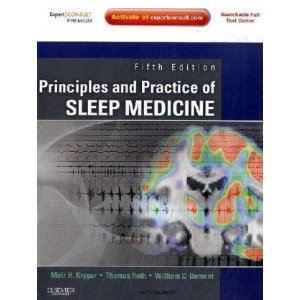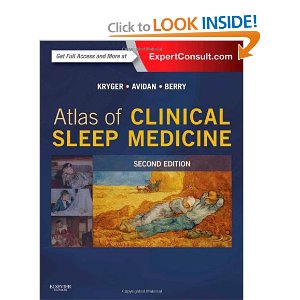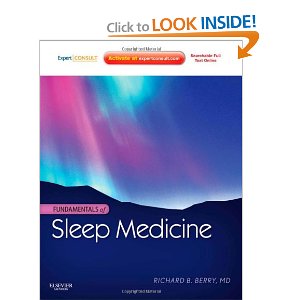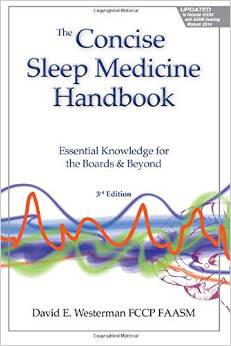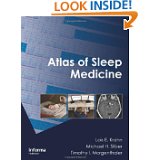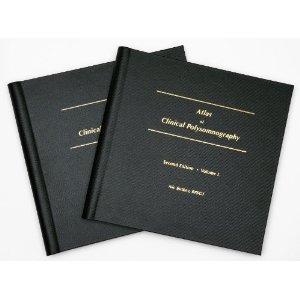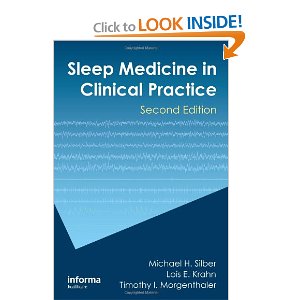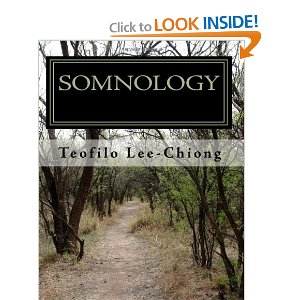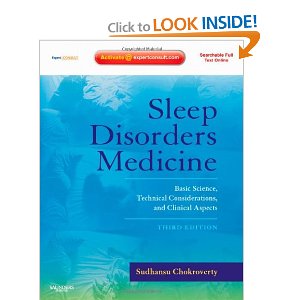What to study for the 2015 ABIM Sleep Board Exam
Recommendations
Clinical Professor of Medicine
Case Western
Reserve University School of Medicine, Cleveland
Board Certified in
Pulmonary and Sleep Medicine
Click here for Introduction and results of 2013 Board Exam
|
1. Highly recommended for Sleep Board Review
- do not pass up!
American Academy of Sleep MedicineI recommend joining AASM (if you're not already a member) because of the great educational opportunities it offers. Some activities -- like the national educational and board review courses -- are open to all (higher fees for non-members), whereas others require membership (mainly access to the "members only" section of the AASM web site). AASM's board review offerings are listed together in one area called Board Review Resources. AASM also has an Online Learning Center that contains links to the Practice Exams and "Scoring Reviews." Scoring Reviews consist of 200 Epochs where you can practice scoring sleep staging, arousals, limb movements and respiratory events. All the AASM recommendations are listed below, but only specific items with internet links are HIGHLY RECOMMENDED. Study all the linked items in this category. Other, non-linked items that I mention in this section will be listed again (with internet links) in a lower category of recommendation. a. NATIONAL REVIEW COURSES. You can take AASM's course without being a member, at a slightly higher registration fee. See Category 4, Review Courses, below. b. PRINT and e-PUBLICATIONS. These are found at AASM's Resource Library. Two of the items are CRUCIAL FOR THOROUGH REVIEW AND MASTERY: ICSD-3 and AASM Scoring Manual.
The International Classification of Sleep Disorders, 3nd Edition;
American Academy of Sleep Medicine, Darien, IL, 2014.
The AASM Manual for the Scoring of Sleep and Associated Events was originally published in 2007, and updated in
2012 and again in 2014, in both digital and print format as Version 2.1.
"Written in straightforward and accessible language, the Technologist’s Handbook provides answers to your questions about the updated Manual, including step-by-step instructions for scoring stages and events. The Handbook includes many illustrations of the waveforms and patterns used in sleep scoring as well as a glossary of the terms. It serves as a comprehensive introduction to sleep scoring, a useful reference when questions arise, and a valuable resource for studying for the Board of Registered Polysomnographic Technologists’™ examination."In fact, much of the information in the Handbook should be in the Manual. So, though the Technologist's Handbook is officially geared toward sleep technologists, and not sleep physicians, I highly recommend it as a companion to the Scoring Manual. It follows the order of rules for the Scoring Manual, with the same sections and chapter headings. Also recommended on the AASM Resource Library web site are AASM Standards and Guidelines for Practice of Sleep Medicine, and Essential Readings in Sleep Medicine. These are readings you should review, but not Category 1 since they are more for review than mastery. I put them in Category 3. In summary, you should know everything in ICSD-3 and the AASM Scoring Manual. You would be foolish to go into the exam without knowledge of what's in these books. To understand these two resources more fully, you should also have the 2008 Case Book and the Technologist's Handbook. c. Web site offerings: There is a wealth of material on AASM's web site, including lectures, journal articles, and quizzes (some requiring AASM membership). Go to AASM Online Learning Center for the most immediate items. You should spend time and review EVERYTHING THAT COULD BE RELATED TO BOARD EXAM QUESTIONS. As a minimum, be sure to closely study the American Academy of Sleep Medicine Practice Exams 1-6 and the new Sleep Study Scoring Tests 1-3. THESE PRACTICE EXAMS ARE HIGHLY RECOMMENDED ($25 each for members). Some questions from the first edition of these practice tests were on the 2007 board exam!! I also recommend you subscribe to AASM's MOC Scoring Reviews. Per AASM, "20% of the questions [on the board exam] will be devoted to sleep evaluation."d. Various CDs, including webinars. See more about ASSM's webinars in Category 2. American College of Chest PhysiciansLike AASM, ACCP also publishes excellent materials for sleep board review. I don't recommend joining ACCP unless you are a chest-oriented physician, but do take advantage of their board-review offerings (higher fees for non-members). There are several ACCP opportunities for sleep board review: a. NATIONAL REVIEW COURSES. Many of the people who teach the AASM courses also lecture for ACCP. See Category 4, Review Courses, below. b. PRINT PUBLICATIONS. There are several, including the syllabus from their annual review course. However, the only HIGHLY RECOMMENDED print item is ACCP SEEK - Sleep, 3rd Edition, 2012 . SEEK provides case-based questions and answers, many with figures (PSG, actigraphy, sleep log). "ACCP SEEK - Sleep" is just the type of study guide needed for the board exam. An added plus: CME for this book is available. c. ACCP Web Site. There is some useful information on sleep for members; see Category 2. Kryger's Sleep Medicine Review, 2nd EditionMeir H. Kryger, MD, Russell Rosenberg, PhD, Douglas Kirsh, MD, and Lawrence Martin, MD. Elsevier, 2015. (Full Disclosure: I am one of the authors) This book belongs in Category 1 beause: a) it is just published in 2015, in time for extensive review before the October Sleep Boards; b) it tracks the format of the board exam; c) it is Q&A, so you can readily determine what you most need to study. Kryger's Kryger's Sleep Medicine Review offers ability to obtain CME credits from the Atlanta School of Sleep Medicine, and is also available as a searchable text on-line, via Expert Consult. |
|
2. Excellent because of Q & A format
or short reviews of sleep topics, but not as crucial to board review
as Category 1
Sleep Medicine Pearls, 3rd edition, by Richard B. Berry. Mary H. Wagner. Saundes, 2014. Excellent case reviews. Dr. Berry is one of the physicians who has written questions for the board exam.
The Amazon blurb on Focus on Sleep Medicine (2009) (link below) states: "This question-and-answer formatted book provides a complete yet focused review of sleep medicine. It is geared to physicians who wish to assess their knowledge of sleep medicine and will be of interest to neurologists, pulmonologists, psychiatrists, otolaryngologists, and respiratory and sleep technologists. The distribution of questions mimics the sleep medicine boards. The book focuses on sleep evaluation and provides strong coverage of sleep physiology. Detailed explanations and educational objectives accompany every answer"
Review of Sleep Medicine (2011), Alon Avidan and Teri J. Barkoukis, 3rd Edition, Elsevier Saunders, 2011. The 3rd edition, like the first two, is geared to Sleep Board review, and contains both straigthforward text and lots of test questions. Also available online in searchable format at Expert Consult series. |
|
3. Use as reference only -- not as
primary study aid
Principles and Practice of Sleep Medicine, 5th ed. (printed text + e-edition), published Nov 1, 2010. MH Kryger, T Roth and WC Dement, editors. Elsevier Saunders. This is the standard textbook of sleep medicine. I strongly recommend buying the version that comes with the e-edition, for continual updates plus access to videos and other web-based features not in the printed book. Another feature of the e-edition are Self Assessment Questions, in a timed format. While these questions are not specifically designed for board review (as is Kryger's Sleep Medicine Review, in Category 1 above), they should not be passed up. The e-edition can be previewed at Expert Consult. PPSM should be in every sleep physician's library. As for board review, when you come across topics in the Category 1 & 2 materials (above) about which you need more info, refer to PPSM. (Note: If you have any interest in the history of sleep medicine -- admittedly not a board review topic -- you will enjoy Dr. Kryger's video interviews of the major figures in Sleep: Nathaniel Kleitman, William Dement, Colin Sullivan, et al.) AASM Standards and Guidelines for the Practice of Sleep Medicine are reprints from Sleep. I would especially peruse later papers (2010-2014) to get a good feel for accepted practice standards. Essential Readings in Sleep Medicine is available for purchase on AASM's web site. This item and Standards and Guidelines is all you should need from sleep medicine journals.
|
|
4. Review Courses
Sleep Review Courses are listed separately because they are relatively expensive and time consuming, and don't really fit any of the other categories. You can pass the exam without ever attending one, but they are very popular and, time permitting, definitely recommended (at least one). If nothing else, they focus your attention on what's important to review on your own. There are many more courses than you'll have time for, and only a few are listed here. Note also that many of these live courses are now available on DVD; while still expensive, DVDs eliminate travel and hotel costs, and can be reviewed at your leisure. If you have time for only one comprehensive course, choose either the ACCP or AASM board review course. ACCP Board Review. The previous ACCP courses are available on DVD; see the ACCP catalogue. AASM Board Review Course. There are several courses offered each fall. If you register for the exam you will be receiving brochures. School of Sleep Medicine, Stanford University. This is probably the oldest of the comprehensive review courses. People who have attended state it is very good. The course is also available on DVD. Atlanta School of Sleep Medicine. Offers multiple courses, some specifically designed for sleep board review.
|
|
5. Books and and non-books to consider if you wish to leave no stone unturned.
In particular, the three Atlases are well worth perusing if you have time left over after catergories 1 & 2. Links are to amazon.com. Titles noted as Expert Consult series are also available on-line in a completely searchable format.---------------------------------- Atlas of Clinical Sleep Medicine, Meir Kryger, editor, Elsevier Saunders, 2014; 2nd edition. This Atlas is chock full of images from sleep medicine, including patient photos, PSG epochs and colored graphs. Dr. Kryger is also the senior editor of Principles and Practice of Sleep Medicine, 5th ed. As with that book, Atlas is also available as a searchable text on-line, via Expert Consult. ---------------------------------- Berry's Fundamentals of Sleep Medicine, Richard Berry, Elsevier Saunders, 2011. Expert Consult series. Dr. Berry is also author of the popular Sleep Medicine Pearls, published in 2002. ---------------------------------- Principles and Practice of Pediatric Sleep Medicine, 2nd Ed., Stephen H. Sheldon, Meir H. Kryger, Richard Feber, David Gozal. Elsevier Saunders, 2014. Expert Consult series. This book should not be needed for board review, as pediatrics is amply covered in materials listed in the first three sections. However, if you practice pediatric sleep medicine, or plan to, then this book is for you.---------------------------------- The Concise Sleep Medicine Handbook: Essential Knowledge for the Boards & Beyond, David E. Westerman, GSSD Publishers, Atlanta, 2015 (3rd Edition). This self-published book is by a faculty member of the Atlanta School of Sleep Medicine, which offers board review courses (see Category 4). It is aptly named ("Concise") and includes detailed outlines of just about all sleep medicine topics. It is what physicians would probably compile as a study aid for themselves if they had the time. The 3rd edition is updated to include ICSD3 and the latest version of the AASM Scoring Manual. There are also multiple-choice questions for each chapter. ---------------------------------- Atlas of Sleep Medicine, by Lois Krahn, Michael Silber and Timothy Morgenthaler. Informa Health Care, 2010.
---------------------------------- Atlas of Clinical Polysomnography, Nic Butkov, RPSGT, 2nd Edition. Synapse Media, 2010.
---------------------------------- Sleep Medicine in Clinical Practice, 2nd Edition, by Michael Silber, Lois E. Krahn and Timothy Morgenthaler. Informa Health Care, 2010. ---------------------------------- Somnology: Learn SLEEP MEDICINE in One Weekend, by Teofilo Lee-Chiong. CreateSpace, 2009. ---------------------------------- Sleep Disorders Medicine, by Sudhansu Chokroverty. Saunders, 2009. Expert Consult series,
----------------------------------
|
|
6. Journals
Chest (ACCP), Sleep (ASSM) and AJRCCM (ATS) are all leading medical journals with emphasis on original research. They also publish reviews of sleep topics that can be useful for board review (including the AASM Practice Parameters mentioned in Category 3). However, journals per se are a low-order priority for studying for the sleep boards. Most journal articles relevant for board review (such as the AASM Practice Parameters) are available on line. If you do want to peruse current or back issues of journals, the two I recommend are Journal of Clinical Sleep Medicine and Sleep Medicine Clinics. Journal of Clinical Sleep Medicine is included with membership in AASM. One article in JCSM you should find especially interesting is Development and Results of the First ABMS Subspecialty Certification Examination in Sleep Medicine (J Clin Sleep Med 2008;4(5):505-508). It explains how the exam was created, how it's scored, and gives the pass rates per type of examinee (fellowship trained vs. practice experience vs. previous ABMS certification). |
Introduction to this web site
Lawrence Martin, MD
I took the ABIM sleep board certification exam November 2007, the first time it was given. I am a practicing pulmonologist and, like most candidates that year (1034 out of 1882), entered via the practice pathway (ie, no sleep medicine fellowship). ABIM allowed the first 3 exams (2007, 09 and 11) to be taken without a year of fellowship training. Beginning in 2013, and now for all future exams, you must have a one year subspecialty sleep fellowship training in an accredited program. The only exception is if you took the ABIM exam once and did not pass; then you can sit for it again.
I did not underestimate the test, nor should you. The pass rate of that first exam was 73%. Below are the number taking the exam and pass rates for 2007, 2009, 2011 and 2013.
YEAR: 2007
EXAMINEES: 1882
NO. PASSED (%): 1034 (73%)
YEAR: 2009
EXAMINEES: 2140
NO. PASSED (%): 1669 (78%)
YEAR: 2011
EXAMINEES: 2457
NO. PASSED (%): 1597 (65%)
YEAR: 2013
EXAMINEES: 349
NO. PASSED (%): 314 (90%)
Note the fall off in examinees in 2013 compared to the first three exams, as well as the much higher pass rate. Both changes are attributable to the fact that only fellowship-trained physicians and previous test-takers could sit for the 2013 exam.
It is a one day computer-based exam; details are provided at the ABIM Sleep Exam web site. The exam is comprehensive and covers clinical decision making and basic science (and a lot more pediatrics than is advertised). It is the SAME TEST for all, given under the auspices of several cooperating boards: internal medicine, family practice, pediatrics, neurology and otolaryngology.
In preparation I took several out-of-town courses, including both the AASM and ACCP board review courses. Board review courses are worthwhile, mainly to get you out of the office, focus your attention and highlight what's important. But the most bang for your buck will be studying on your own, from materials that closely reflect what you need to know. I reviewed and studied numerous texts, CDs, DVDs and web site offerings, and found they ranged from very helpful (see HIGHLY RECOMMENDED) to a waste of time.
For every biannual exam, sleep organizations and publishers produce new books, new editions of old books and various study materials. Please email me any new information that you think might be relevant to the 2015 exam and I'll update the website. drlarry437@gmail.com.
The 2 links below are to web sites that help explain CPAP vs. BiPAP vs. ASV. The 1st
site compares the 3 modes of postive pressure for sleep patients; the 2nd site compares machines
currently available for ASV (ResMed and Respironics). While they are not designed
as board review web sites, you may find them helpful nonetheless.
Non-invasive positive pressure therapy: CPAP, BiPAP, ASV |
Adaptive Servo Ventilation: ResMed vs. Respironics
Finally, the 4 links below are to web sites I have authored for a general audience on sleep topics. They include patient-centered stories, plus detailed information about specific conditions such as sleep apnea, narcolepsy and insomnia. You may find the sites interesting and perhaps even informative, but they are not intended for sleep board review.
Sleep Home Page | Internet Sleep Links | Books about sleep disorders (with links to Amazon.com) | Drugs for Sleep & Awake - The Good and the Bad
Forward any comments to: drlarry437@gmail.com
Copyright � Lawrence Martin, MD
This web site went on-line November 10, 2008, and has been updated frequently since then.
Last updated: July 9, 2015.
Today is
Next ABIM Sleep Board Exam is October 22, 2015
Lakesidepress Home Page |
Alphabetical Index |
Subject Index |
Sleep Home Page
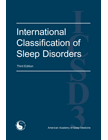
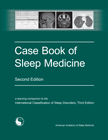
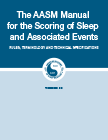
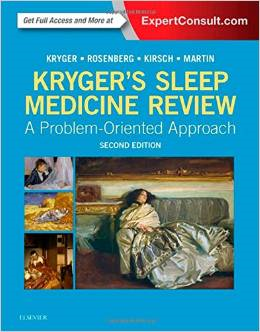
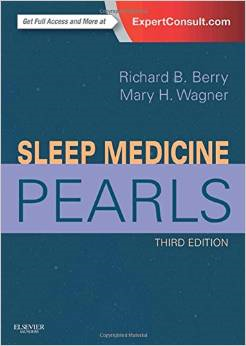
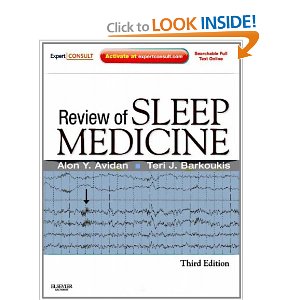 .
.
